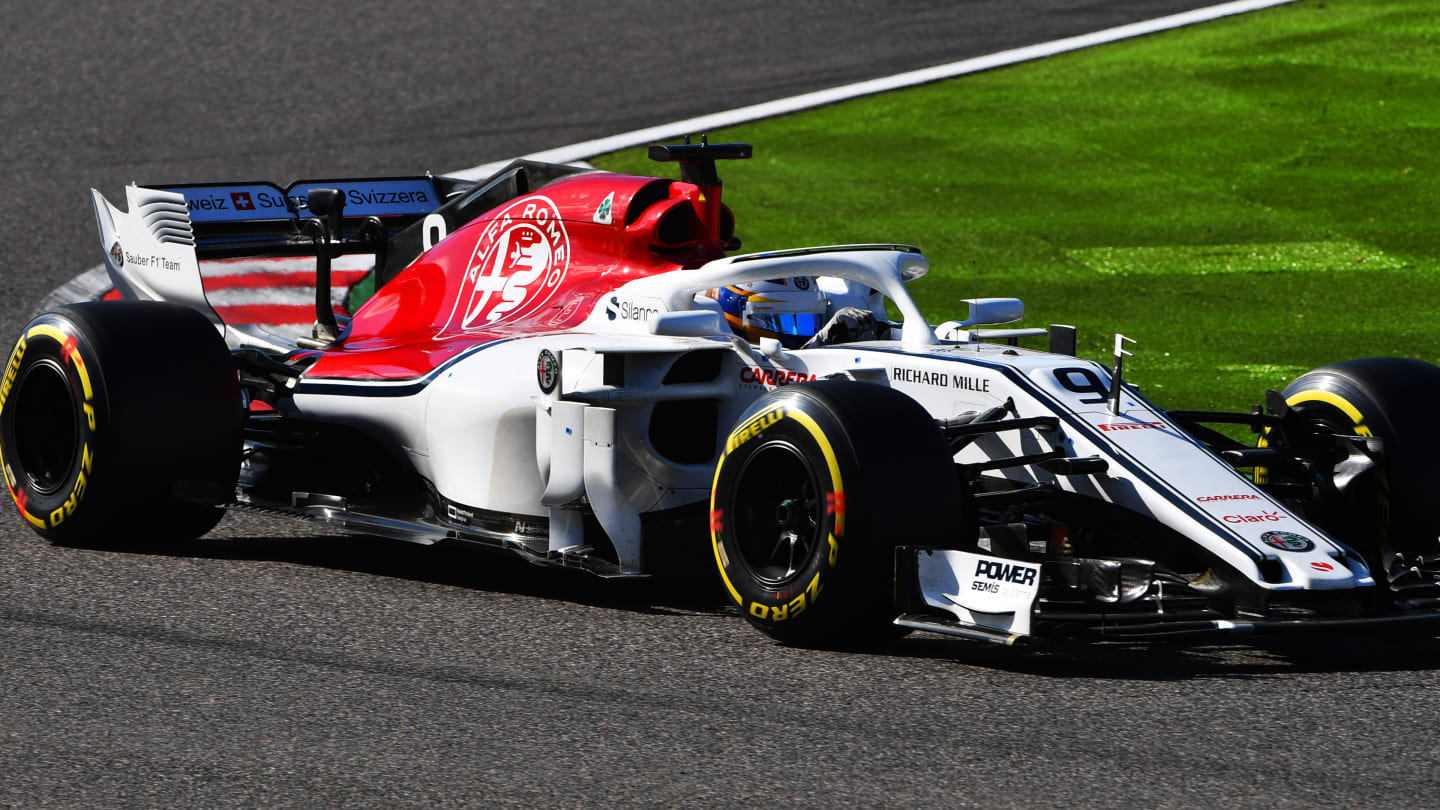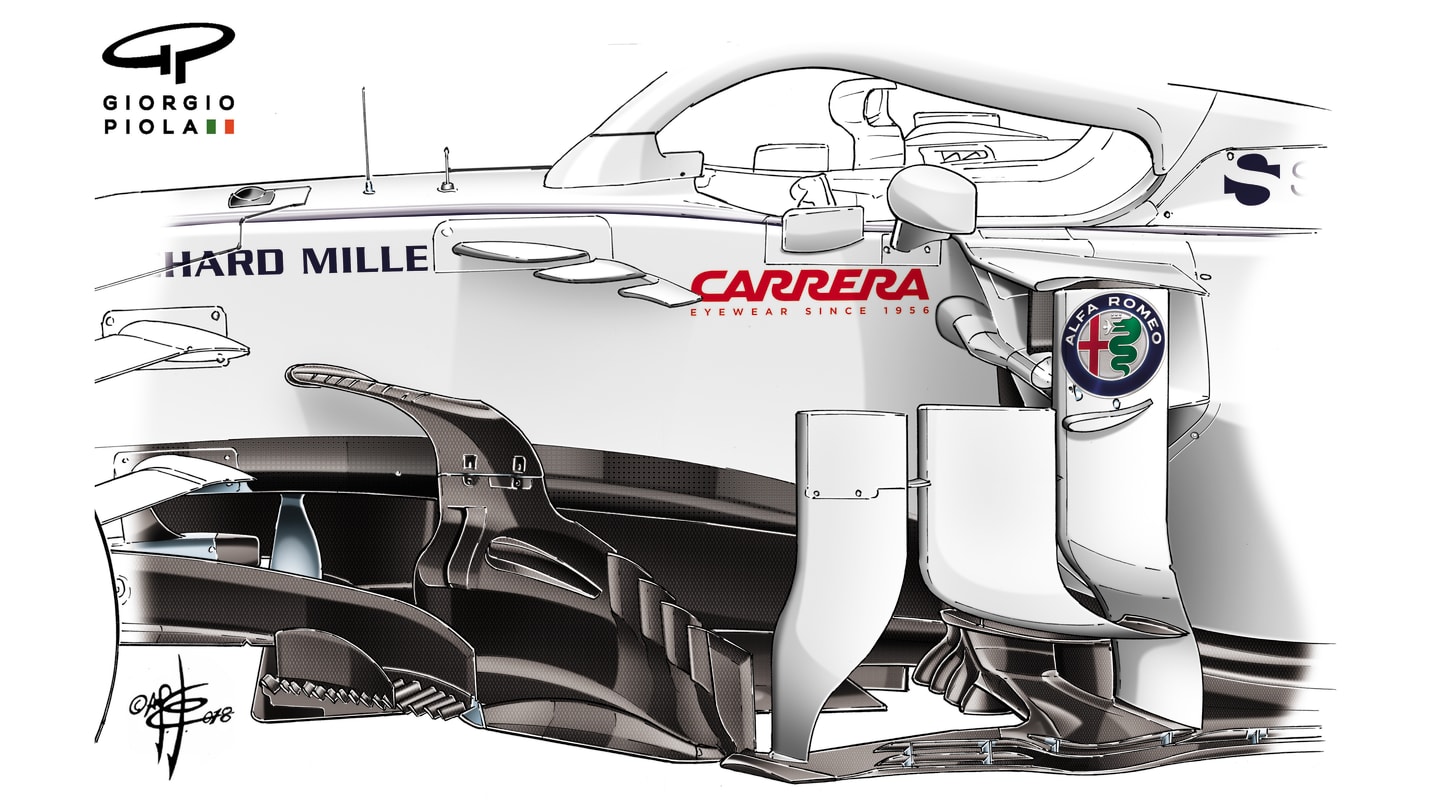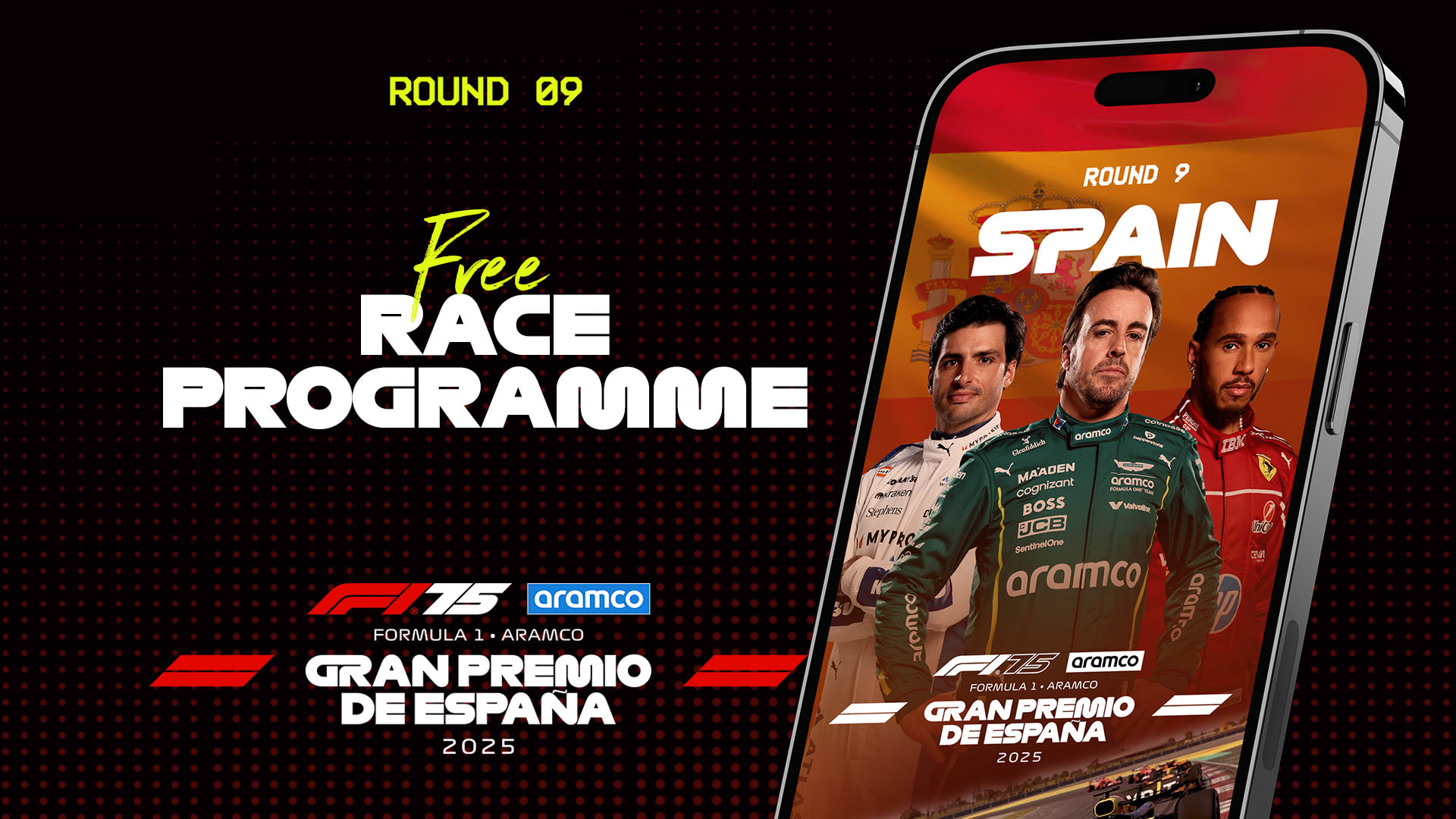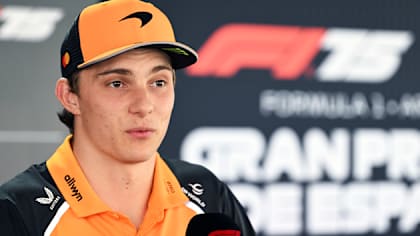
30 May - 01 June
Technical
TECH TUESDAY: How Sauber turned their C37 into a mighty midfielder

Share

The Alfa-Romeo Sauber C37 is comfortably the most improved car of the season. At Melbourne for race one, it was the slowest qualifying car of all, around 0.1s adrift of Williams. By Sochi, at 2s faster than the Williams, it was able to win the unofficial ‘best of the rest’ class behind the big three, with Haas driver Kevin Magnussen reckoning that the Sauber was ‘way too fast’ for him to compete with.
This was especially significant for two reasons: 1) The Haas has usually been the fastest of the second group of cars this season, qualifying directly behind the leading three teams of Mercedes, Ferrari and Red Bull in nine of the 17 events to date. 2) The Haas and Sauber are identically powered, illustrating that the Swiss team have made very significant aerodynamic gains through the season.
It is a slightly unusual car aerodynamically, conceived under the direction of head of aero Nicolas Hennel and chief designer Eric Gandelin. In its radiator and sidepod configuration, it differs from every other car on the grid. It has the most extreme solution to the front suspension/radiator inlet layout of all the 2018 cars, with the highest upper wishbones and the lowest radiator inlets. The wishbones are on long hub extensions, clearing the best path possible for the airflow to reach the radiators. The inlets themselves are split into upper and lower openings.

Check out the deep undercut in the lower part of the rear 'coke bottle' profile, as well as the high upper wishbone layout and split radiator inlets
The sidepods are narrow, not allowing for much of a hollowed-out undercut at the front, and in plan view the body does not have as dramatic a ‘coke bottle’ profile as other cars – but beneath the upper part of the rear body, the coke bottle section has a dramatic undercut of its own.
Conventionally, an undercut sidepod at the front in combination with a pronounced coke bottle profile further back will manipulate the air pressure to accelerate the airflow as it makes its way to the downforce-generating surfaces at the rear of the car. But the Sauber is introducing most of the undercut further back, within the coke bottle profile. It will do much the same job as the conventional arrangement but in a slightly different way. Consequently, much of Sauber’s aero development has been correspondingly unique.

The C37's unique bargeboard arrangement, designed to direct airflow to the lower flanks of the sidepods
In Sochi, the car received a new bargeboard arrangement and further refinements to its diffuser. The bargeboard’s leading vertical element is now joined to the side of the chassis and profiled in such a way that it takes the downwards-flowing airflow from that high upper wishbone and further conditions it to slip along the lower flanks of the sidepods. It should be introducing more energy to the airflow at that critical point where it needs to get around those sidepods that do not have much of an undercut to help.
At the back, the outer edge of the diffuser features unique U-shaped guide vanes that appear to join up the flow between the diffuser exit, the rear brake duct vanes and the slots in the rear wing endplate. An extra slot has been introduced here to further refine a flow that will likely be even more complex than most because of the unique undercut extent of the coke bottle section just ahead.

The rear elements of the Sauber have to work hard to refine a complex airflow
The unusual configuration of the car, as the re-financed Sauber squad essentially started again from scratch after several years existing on the margins, has probably played its part in the initially slow gestation of its development. But the longer the season goes on, the better the C37 is performing. Looking ahead to next year, that will be a very encouraging sign for the incoming Kimi Raikkonen and his legions of fans.
YOU MIGHT ALSO LIKE

Video WEEKEND WARM-UP: McLaren look the team to beat but Verstappen aims to keep winning run going in Spain
News Victor Martins to make F1 weekend debut as Williams confirm F2 racer for FP1 in Barcelona
Feature F1 FANTASY: Strategist Selection – What’s the best line-up for the 2025 Spanish Grand Prix?
News Piastri assesses prospects for Barcelona after ‘most challenging weekend of the year so far’ in Monaco







